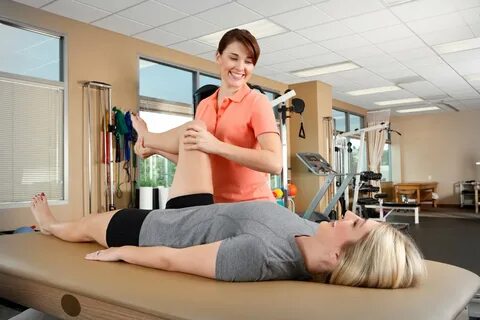TREATMENT OF WRINKLES IN DERMATOFUNCTIONAL PHYSIOTHERAPY
Over time, the amount of melanin also produced decreases, making the skin more sensitive to ultraviolet radiation and favoring skin aging.
The lack of elastin, a protein
that makes the skin soft, also plays a specific role.
Its decrease causes an increase
in the skin volume and phenomena such as the double chin.
The face is the part of the body
that maintains a direct relationship with the world around us. Doctor Ali
provides the best health and wellness
center in the USA. It is mainly through it that the human being
expresses feelings and emotions.
Aging causes the loss of
subcutaneous fat and dermal collagen with the consequent appearance of
wrinkles.
Another system responsible
For the formation of wrinkles is
the aponeurotic system (the band that covers the muscles of the whole body),
responsible for maintaining the facial tone because it is rather superficial
and directly attached to the mimic muscles.
The facial musculature is
responsible for our expressions; there is a muscle for each function, and all
together, they act to give us a personalized facial expression.
Alterations in facial expressions
are often a source of frustration, and when they are due to neurological
problems (such as facial nerve palsy), they are also a big problem.
Let's think about those who work
there with their appearance (artists, actors, etc.), and what can cause such a
sudden change in their face in terms of image.
Transformations over time,
therefore due to aging, have a multifactorial etiology. Notwithstanding that we
all age, the evolution and appearance of wrinkles (or skin folds) on the face
indeed depend on:
Climatic aspects linked to the
area of origin: living at the equator certainly exposes the skin more to
premature aging (loss of elasticity) than those who live in the Baltic
countries;
Congenital aspects, linked to
family predisposition, because each strain has a different bias towards
different pathologies, in this case of the skin, predisposing over time to the
appearance or loss of certain aspects;
Anthropological aspects, linked
to the somatic characteristics of the area of origin of the population
(Eskimos, Africans, Japanese, etc.)
Factors related to habits and
lifestyle: smoking, alcohol, being obese, and having an incorrect diet have an
influence both on the elasticity of the tissues and on the renal and hepatic
function, which are closely correlated with the organ curtain.
There are various types:
of expression: immediately
present and are linked to the muscular contraction that determines the facial
expressions that make us unique, linked to our emotions, and can increase or
decrease over time;
·
frontal and periocular (crow's feet);
·
eye and lip contour ;
·
Sleep, i.e., those related to the pressure of
the face on the pillow. As the hours go by, they disappear, but over time they
tend to persist;
·
linked to gravity, which has a
"weight" action on the skin;
·
Actinic, related to exposure to UV rays from the
sun or tanning lamps.
·
HOW IS MADE THE DIAGNOSIS
The diagnosis is clinical; that
is, instrumental tests are generally not necessary to evaluate the entity and
type of wrinkles by the dermatologist, the plastic surgeon, the aesthetic
doctor.
An accurate medical history is
always essential, i.e., the collection of information from the patient about
his cosmetic habits, his lifestyle, the type of work activity and sun exposure,
the dietary regime, the presence of any concomitant pathologies, and drug
therapies in progress. This allows you to identify particular risk factors for
the onset of wrinkles and to set up more targeted and specific treatments.
Some machines can integrate the
clinician's assessment in doubtful cases:
·
measure the skin temperature, to test the level
of vascularization of the skin;
·
calculate the pH of the skin, which should
generally be acidic (basic in some oily skin)
·
geometry, to quantify the presence of superficial
lipids;
·
corneometry, to evaluate the hydration of the
stratum corneum of the skin;
· method of skin impressions, which, thanks to the
use of silicone resins, allows to assess the depth of the wrinkle;
·
Chemiluminescence (dermatologist) for the
differential diagnosis of skin lesions. Dr Esaam provides the best
CARE AND TREATMENTS
The pillars of wrinkle care and
treatment are:
·
lifestyle correction;
·
natural remedies;
·
Dermatofunctional physiotherapy (FDF)
·
Aesthetic treatments.
Lifestyle
Correcting our lifestyle is the
basis of the concept of "taking care of yourself," or sacrifices to
obtain a result.
So supporting a healthy diet,
eliminating smoking, minimizing alcohol consumption, exercising, hydrating, and
cleansing the skin allows for a preventive and containment action on the
appearance of wrinkles.
You can also use supplements
based on antioxidants (e.g., carotenoids, flavonoids, zinc, vitamin C) or
substances "precursors" of hyaluronic acid, the building block of our
collagen.
Natural remedies
Of undisputed validity but which require
constant use, they are:
·
various oils such as argon, jojoba, olive,
baobab;
·
egg whites;
·
snail slime;
·
Bananas;
·
Some medicinal plants such as evening primrose
and purslane.
Dermatofunctional physiotherapy
The FDF intervenes in this field
by bringing the experience of some pioneers of the branch (such as Dr. Patricia
Froes Meyers, author of many publications) who have put in place effective and
long-lasting personalized intervention protocols.
For the treatment of wrinkles,
the following are carried out:
Manual therapy techniques for the
treatment of facial flaccidity (prevalent in FDF), which through specific
mobilization exercises stimulate the production of collagen fibres and synovial
fluid, elasticize the tissues and decrease pain.
These techniques, therefore, work
on the following structures: superficial aponeurotic muscle system (SMAS)
favouring the lifting effect on the face. Doctor Ali provides the best holistic medicine center in the USA.
On the skin tending vascularization and toning, on the muscles leaning their
repair and shaping with the acquisition of strength and elasticity.
Massage, which on the face has
the purpose of reducing the intensity, frequency, duration of muscle
contraction and the entire superficial musculoskeletal system (SMAS);




Comments
Post a Comment